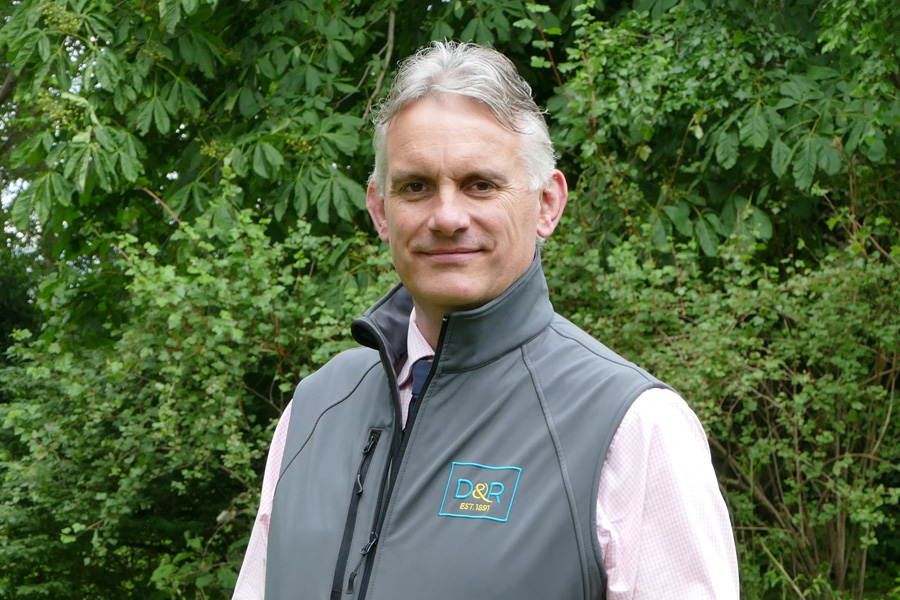Author: Derek Bathgate Davidson & Robertson (D&R) Director and lead on Renewables
The Onshore Wind Sector Deal for Scotland is a deal between the Scottish Government and the onshore wind sector (the developers and stakeholders). It sets out the ambition for the next phase of onshore wind energy in Scotland.
Both parties realised the need for collaboration in the hope of achieving Scotland’s target of 20 gigawatts of installed onshore wind capacity by 2030. The Deal is a collective vision, to benefit Scotland’s communities, drive economic growth, create high-quality jobs, reduce carbon emissions and the impacts on land use and the environment.
It is a big deal with a big ambition, which can have a positive impact on the Scottish countryside and communities if all the elements can align. There are 6 elements as follows:
- Skills, supply chain, and the circular economy. The aim is to increase this sector’s workforce skills through improved training and education and includes transitioning skilled professionals into renewables from sectors like oil and gas. It seeks to maximise ways to reuse materials and cut waste in the supply chains – the so-called Circular Economy, as well as ensuring work opportunities for local businesses. This represents an opportunity for those who live and work in the countryside to upskill and benefit financially from getting into the supply chain and circular economy.
- Community. Collaboration with local communities at all stages includes the ‘community package’ of engagement, community benefits and shared ownership, to generate and circulate more local wealth. Community benefits include measures like energy efficiency improvement, solar PV panels, low carbon heating in homes and installation of electric vehicle charging infrastructures.
- Land use and environment. The sector will work with Government to strike a balance between the need for increased onshore wind capacity, and the impact it can have on land use and the environment. Key actions are how peatland management and restoration can exist alongside wind development ambitions, and a national approach to measuring biodiversity enhancement – delivered by Habitat Management Plans and a central data repository.
Onshore wind developers will pay landowners for implementing plans that enhance biodiversity, such as peatland management and restoration, compensatory planting (of trees), creation of species-rich habitats, etc. It is important to note they don’t have to be on the land that hosts turbines and associated infrastructure.
- Planning. The aim is to cut the time it takes to determine Section 36 applications (developments with capacity of 50 megawatts or more), with more resources and streamlining the application process. The goal is to determine new site applications and repowering of existing operational sites, within 12 months (where there is no public inquiry), or 24 months if there is a public inquiry. Applications for life extension of operational wind farms will be determined within 5 months. If achieved, this will see more onshore wind farms built in a shorter period and present more opportunities for landowners and occupiers to directly benefit from developments.
- Legislation & regulations. Through changes in our legal processes, parties look to support a more strategic method of delivering our electricity network investment, with a coordinated approach to transporting turbine components across the road network. It will be interesting to see tangible outcomes of this component and how it will impact land rights – watch this space.
- Technical. The main thrust is to align delivery of onshore wind developments, whilst maintaining safe aviation operations. In particular, unlocking onshore wind restrictions within the consultation zone of the Eskdalemuir Seismic Array. This extends into Northern England and covers around 10% of Scotland’s total land area. It could be a game changer for landowners and occupiers in the south of Scotland who have had previous onshore wind development proposals refused.
For those living and working in the countryside, the supply chain and circular economy are good prospects. For landowners, there is an opportunity to be paid for enriching biodiversity, and as it does not have to be on the land hosting the turbines, it means the chance of enriching the environment elsewhere on their property.
It is important to take a holistic long-term view of these opportunities, and always seek professional advice as soon at the earliest stage when working with developers and utility companies. For more information contact D&R on 0131 449 6212.



